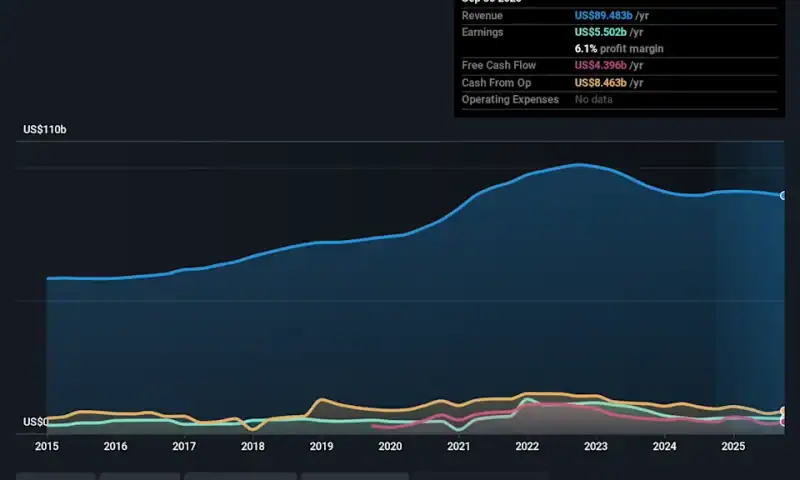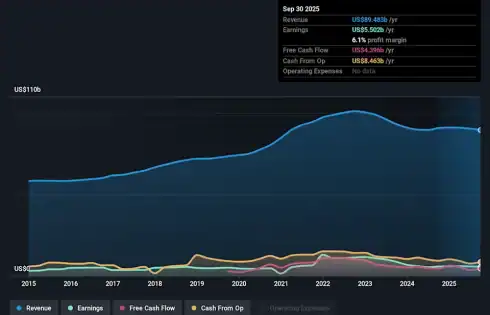
After a year of frenzied dealmaking and rumors of an upcoming IPO, the financial scrutiny into OpenAI is intensifying. Leaked documents obtained by tech blogger Ed Zitron provide more of a glimpse into OpenAI’s financials — specifically its revenue and compute costs over the past couple of years.
Zitron reported this week that in 2024, Microsoft received $493.8 million in revenue share payments from OpenAI. In the first three quarters of 2025, that number jumped to $865.8 million, according to documents he viewed.
OpenAI reportedly shares 20% of its revenue with Microsoft as part of a previous deal where the software giant invested over $13 billion in the powerful AI startup. (Neither the startup nor the people in Redmond have publicly confirmed this percentage.)
However, this is where things get a little sticky, because Microsoft also shares revenue with OpenAI, kicking back about 20% of the revenues from Bing and Azure OpenAI Service, a source familiar with the matter told TechCrunch. Bing is powered by OpenAI, and the OpenAI Service sells cloud access to OpenAI’s models to developers and businesses.
The source also told TechCrunch that the leaked payments refer to Microsoft’s net revenue share, not the gross revenue share. In other words, they don’t include whatever Microsoft paid to OpenAI from Bing and Azure OpenAI royalties. Microsoft deducts those figures from its internally reported revenue share numbers, according to this person.
Microsoft doesn’t break out how much it makes from Bing and Azure OpenAI in its financial statements, so it’s difficult to estimate how much the tech giant is kicking back.
Nevertheless, the leaked documents provide a window into the hottest company on the private markets today — and not just how much it makes in revenue, but also how much it’s spending in comparison to that revenue.
So, based on that widely reported 20% revenue-share statistic, we can infer that OpenAI’s revenue was at least $2.5 billion in 2024 and $4.33 billion in the first three quarters of 2025 — but very likely to be more. Previous reports from The Information put OpenAI’s 2024 revenue at around $4 billion, and its revenue from the first half of 2025 at $4.3 billion.
Altman also recently said OpenAI’s revenue is “well more” than reports of $13 billion a year, will end the year above $20 billion in annualized revenue run rate (which is a projection, not guidance on actual revenue), and that the company could even hit $100 billion by 2027.
Per Zitron’s analysis, OpenAI may have spent roughly $3.8 billion on inference in 2024. That spend increased to roughly $8.65 billion in the first nine months of 2025. Inference is the compute used to run a trained AI model to generate responses.
OpenAI has historically almost exclusively relied on Microsoft Azure to provide compute access, though it has also struck deals with CoreWeave and Oracle, and more recently with AWS and Google Cloud.
Previous reports put OpenAI’s entire compute spend at roughly $5.6 billion for 2024 and its “cost of revenue” at $2.5 billion for the first half of 2025.
A source familiar with the matter told TechCrunch that while OpenAI’s training spend is mostly non-cash — meaning, paid by credits Microsoft awarded OpenAI as part of its investment — the firm’s inference spend is largely cash. (Training refers to the compute resources needed to initially train a model.)
While not a complete picture, these numbers imply that OpenAI could be spending more on inference costs than it is earning in revenue.
And those implications promise to add to the incessant AI bubble chatter that has seeped into every conversation from New York City to Silicon Valley. If model giant OpenAI really still is in the red running its models, what might this mean for the massive investments at jaw-dropping valuations for the rest of the AI world?
OpenAI declined to comment. Microsoft did not respond to TechCrunch’s request for comment.
 Pampa Energía has seen its Fair Value Estimate raised from ARS 4,083.17 to ARS 5,016.50, signaling a substantial upward revision in the company’s projected worth. This increase reflects newfound optimism driven by anticipated improvements in power generation and ongoing expansion in the company’s gas upstream business. Stay tuned to learn how you can keep pace with the evolving story surrounding Pampa Energía’s future prospects.
Stay updated as the Fair Value for Pampa Energía shifts by adding it to your watchlist or portfolio. Alternatively, explore our Community to discover new perspectives on Pampa Energía.
Pampa Energía has seen its Fair Value Estimate raised from ARS 4,083.17 to ARS 5,016.50, signaling a substantial upward revision in the company’s projected worth. This increase reflects newfound optimism driven by anticipated improvements in power generation and ongoing expansion in the company’s gas upstream business. Stay tuned to learn how you can keep pace with the evolving story surrounding Pampa Energía’s future prospects.
Stay updated as the Fair Value for Pampa Energía shifts by adding it to your watchlist or portfolio. Alternatively, explore our Community to discover new perspectives on Pampa Energía.








 Ever wondered if DocuSign might actually be a bargain right now, or if the stock’s recent moves are just noise? Let’s dig in to find out if there’s real value beneath the surface.
The stock has had its ups and downs, falling 2.8% over the past week and remaining nearly flat for the past month. However, it is down 25% year-to-date and 14.3% over the last year, with three-year returns still up 47.3%.
Recent headlines have focused on DocuSign’s partnerships and its steady rollout of new digital agreement features. These developments have helped the company maintain relevance despite volatility in the broader tech sector. Investors are paying close attention to these innovations, suggesting the market could be reconsidering both risks and long-term potential.
As for valuation, DocuSign scores a 3 out of 6 on our value checks, which hints at some areas of undervaluation. We will explore the typical valuation frameworks, but keep reading to see a more nuanced perspective that could make all the difference.
Ever wondered if DocuSign might actually be a bargain right now, or if the stock’s recent moves are just noise? Let’s dig in to find out if there’s real value beneath the surface.
The stock has had its ups and downs, falling 2.8% over the past week and remaining nearly flat for the past month. However, it is down 25% year-to-date and 14.3% over the last year, with three-year returns still up 47.3%.
Recent headlines have focused on DocuSign’s partnerships and its steady rollout of new digital agreement features. These developments have helped the company maintain relevance despite volatility in the broader tech sector. Investors are paying close attention to these innovations, suggesting the market could be reconsidering both risks and long-term potential.
As for valuation, DocuSign scores a 3 out of 6 on our value checks, which hints at some areas of undervaluation. We will explore the typical valuation frameworks, but keep reading to see a more nuanced perspective that could make all the difference.
















 Much has been written about how concentrated the U.S. stock market has become. The 10 largest stocks now make up about 41% of the S&P 500, the highest share in decades. Those mega-caps have driven much of the index’s gains in recent years, and that pattern continues again this year.
But market concentration isn’t just about weight. Another way to look at it is through return contribution, or how much of the S&P 500’s performance comes from its 10 biggest contributors. Those stocks aren’t necessarily the 10 biggest by market cap; smaller names can punch above their weight when their prices move sharply.
This year illustrates that well. The 10 stocks with the largest contributions account for roughly 60% of the S&P 500’s gain (about 10.5 percentage points out of the index’s 17.6% total return). That group includes the usual giants like Nvidia, Apple, Microsoft, and Alphabet, but also names further down the index, such as Palantir, AMD, and Micron Technology.
Much has been written about how concentrated the U.S. stock market has become. The 10 largest stocks now make up about 41% of the S&P 500, the highest share in decades. Those mega-caps have driven much of the index’s gains in recent years, and that pattern continues again this year.
But market concentration isn’t just about weight. Another way to look at it is through return contribution, or how much of the S&P 500’s performance comes from its 10 biggest contributors. Those stocks aren’t necessarily the 10 biggest by market cap; smaller names can punch above their weight when their prices move sharply.
This year illustrates that well. The 10 stocks with the largest contributions account for roughly 60% of the S&P 500’s gain (about 10.5 percentage points out of the index’s 17.6% total return). That group includes the usual giants like Nvidia, Apple, Microsoft, and Alphabet, but also names further down the index, such as Palantir, AMD, and Micron Technology.












